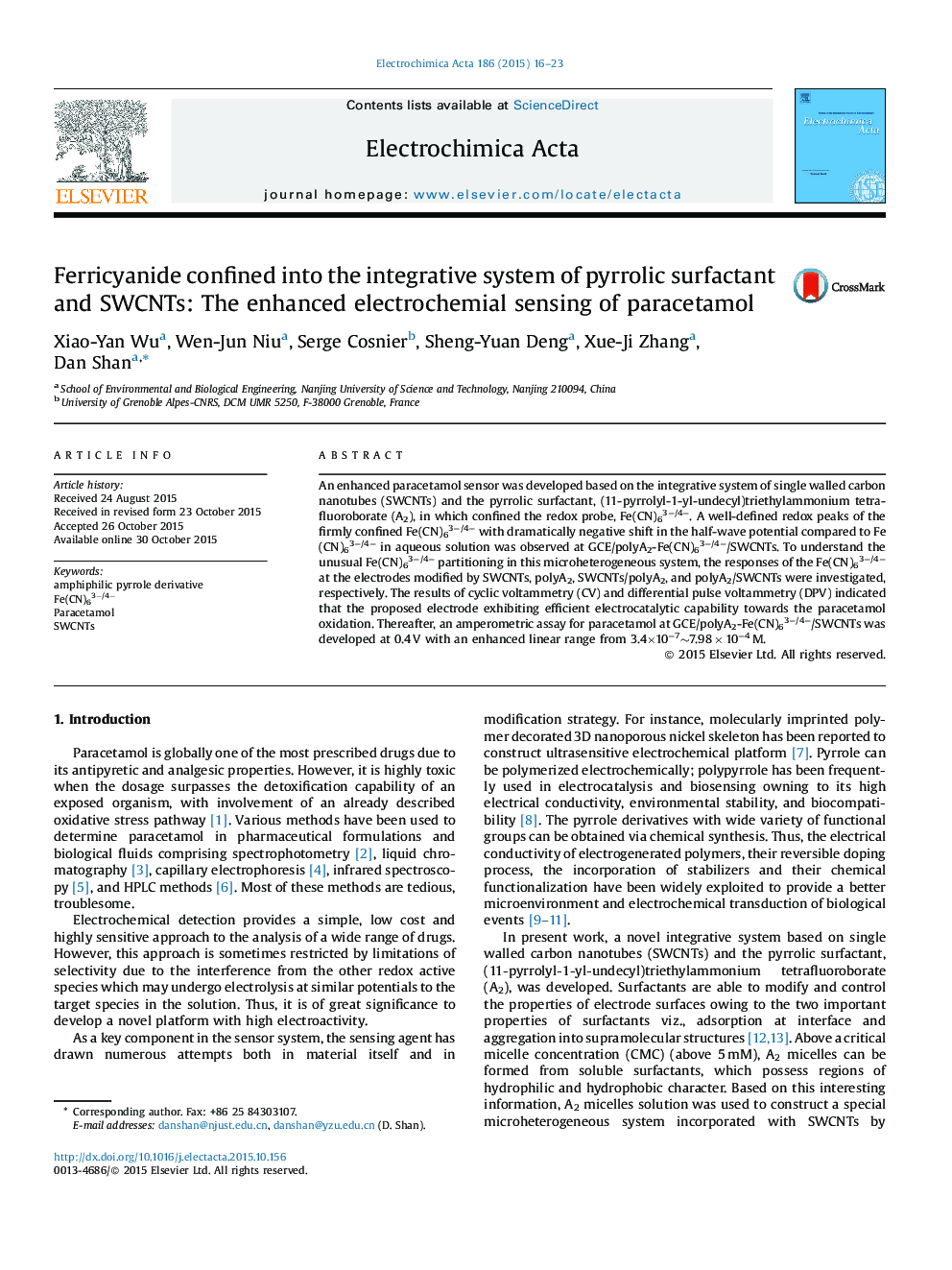| Article ID | Journal | Published Year | Pages | File Type |
|---|---|---|---|---|
| 183535 | Electrochimica Acta | 2015 | 8 Pages |
•Amphiphilic surfactant derived from pyrrole was used to construct a special microheterogeneous system incorporated with SWCNTs by electropolymerization.•Common redox probe, Fe(CN)63−/4−, was captured into this microheterogeneous system due to the cooperation interactions of electrostatic and π-π stacking.•A dramatically negative shift in the half wave potential compared to Fe(CN)63−/4− in aqueous solution can be obtained due to the unusual Fe(CN)63−/4− partitioning.•The entrapped Fe(CN)63−/4− was applied in the construction of the enhanced electrochemical sensor to paracetamol.
An enhanced paracetamol sensor was developed based on the integrative system of single walled carbon nanotubes (SWCNTs) and the pyrrolic surfactant, (11-pyrrolyl-1-yl-undecyl)triethylammonium tetrafluoroborate (A2), in which confined the redox probe, Fe(CN)63−/4−. A well-defined redox peaks of the firmly confined Fe(CN)63−/4− with dramatically negative shift in the half-wave potential compared to Fe(CN)63−/4− in aqueous solution was observed at GCE/polyA2-Fe(CN)63−/4−/SWCNTs. To understand the unusual Fe(CN)63−/4− partitioning in this microheterogeneous system, the responses of the Fe(CN)63−/4− at the electrodes modified by SWCNTs, polyA2, SWCNTs/polyA2, and polyA2/SWCNTs were investigated, respectively. The results of cyclic voltammetry (CV) and differential pulse voltammetry (DPV) indicated that the proposed electrode exhibiting efficient electrocatalytic capability towards the paracetamol oxidation. Thereafter, an amperometric assay for paracetamol at GCE/polyA2-Fe(CN)63−/4−/SWCNTs was developed at 0.4 V with an enhanced linear range from 3.4×10−7∼7.98 × 10−4 M.
Graphical abstractFigure optionsDownload full-size imageDownload as PowerPoint slide
